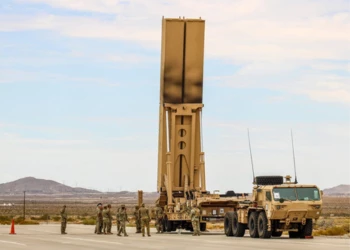Air Force Strategies to Reduce Its Ongoing Pilot Shortage
Add bookmark
A pilot shortage is impacting the aviation industry across the US. In the commercial sector, there will be a need for 5,400 more pilots in the US alone by 2032. Due to challenges like the FAA mandated retirement age for pilots, and the high cost of flight school, this shortage might be difficult to overcome.
At the same time, the US Air Force is currently facing similar challenges with finding pilots. In 2023, the USAF produced about 1,350 pilots, short of its goal of 1,470. The 19th Air Force's goal is to add 1,500 pilots in 2024, according to an Air Force spokesperson. AETC Deputy Commander Maj. Gen. Clark Quinn recently noted added that the current shortage lies at around 2,000 pilots, a number that has remained steadfast over the past several years.
This article will highlight why the shortage exists, and the strategies the Air Force is deploying to overcome its existing pilot shortage.
In order to learn more about how the Air Force is handling pilot recruitment and retention, be sure to register for the IDGA Military Flight Training Summit today. This two-day event from October 29-30 in San Antonio, Texas will bring together a community of 300+ Flight Training Program Managers, Instructors, Industry Leaders and Subject Matter Experts to discuss challenges at the forefront of pilot training.
What caused a pilot shortage?
The Air Force pilot shortage has become an ongoing challenge for years now and can be attributed to a range of factors from commercial competition to a lack of pilot trainers.
“We are managing our way through this, but it is something we are addressing,” Air Force Secretary Frank Kendall told lawmakers in May 2022.
Some of the causes of the pilot shortage include:
Airline competition
Col. Tobias Switzer, an active-duty military fellow at the Center for Strategic and International Studies, told the Air Force Times in 2021 that as more than 20,000 airline pilots reach their FAA-mandated retirement age of 65 in the next several years, more airlines will begin recruiting from the Air Force for replacements.
Pilot trainers
Besides struggling to find pilots, the Air Force is also having a hard time hiring qualified pilot trainers despite transitioning to its new pilot training program, "Undergraduate Pilot Training 2.5" (UPT 2.5) in 2022. The new program was met with a degree of ire from existing trainers due to the more intensive oversight it required from educators. Additionally, in 2022 the Air Force only had 60% of its flight simulator coordinator positions filled, while yet again facing competition from airlines to fill these roles.
Training planes
Another challenge in preparing pilots is overcoming a lack of training planes available for lessons.
For example, as of August 25, more than 220 pilots are waiting to enter the pilot training pipeline, according to 19th Air Force data. Planes such as the T-38 Talon, used to train future bomber and fighter pilots, are “struggling” said Maj. Gen. Clark Quinn. Production on the T-38 ended in 1978, and engine issues have limited flying hours, thus preventing the Air Force from reaching its annual goal of producing pilots.
Pilot training and retention strategies
In 2018, the Air Education and Training Command (AETC) launched Pilot Training Next (PTN) at Randolph Air Force Base, Texas, to produce more pilots faster and at lower costs using innovative technologies and instructional methods. PTN's experimental program graduated its first class of 13 students in 2018, who then proceeded to advanced aircraft training.
After three classes and 41 graduates, AETC introduced Pilot Training 2.5 in 2022 at three major bases, incorporating PTN's innovations. In November 2022, PTN was renamed Pilot Training Transformation (PTT). Additionally, the Air Force launched Helicopter Training Next in FY2021 to increase overall pilot production by creating a separate helicopter training pipeline.
Another one of the strategies the Air Force has deployed is ensuring the pilots already in service stay in uniform longer. In November 2023, the Air Force announced pilots can earn up to $600,000 over 12 years under the latest round of retention bonuses. The fiscal year 2024 incentive offered manned and unmanned pilots, combat systems operators, and air battle managers an extra $15,000 to $50,000 a year depending on their assigned aircraft and committed years of service.
While the USAF faces a variety of new challenges, from a shortage of pilot trainers to outdated planes, by both adopting new, more efficient training programs and offering updated retention bonuses, the USAF is ensuring it can compete with airlines when it comes to training and retaining pilots.






















